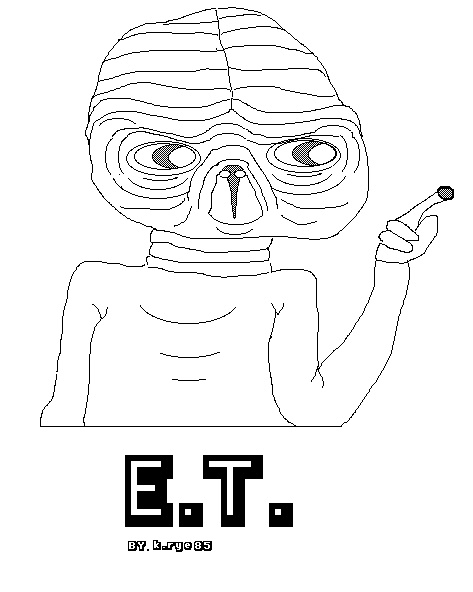It was just last week that my Dad sent me some
vintage peripherals he’d found hanging around. This week, my Dad came through again with an epic score! He just sent me a box of 200 vintage 800K floppies. I didn’t even know they were coming. What a surprise it was to open the box and find hundreds of vintage floppies.
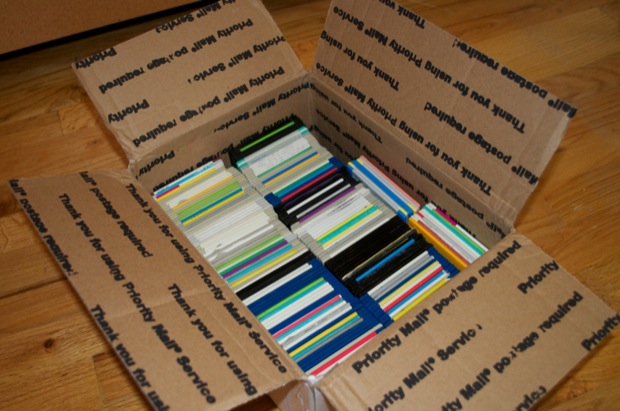
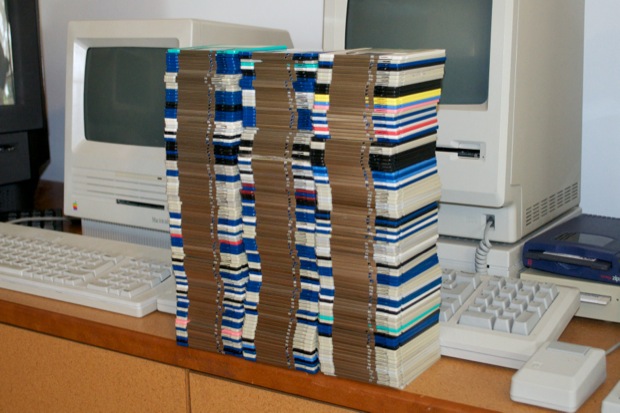
I was very pleased to find several original Apple disks sprinkled throughout the 200 assorted floppies. It’s too bad he wrote on some, but who knew 20+ years ago that these would be so collectable?

If you look a little closer, you’ll also see that one of those disk is an AppleLink 4.0 disk; dated 1987. For the uninitiated, I’ll refer to Wikipedia:
AppleLink was the name of both Apple Computer's online service for its dealers, third party developers, and users, and the client software used to access it. Prior to the commercialization of the Internet, AppleLink was a popular service for Mac and Apple IIGS users. The service was offered from about 1986 to 1994 to various groups, before being superseded by their short-lived eWorld and finally today's multiple Apple websites
Later on, Apple partnered with a company called Quantum to create a Personal version. Eventually, AppleLink would evolve into what we now know as America Online. That’s a nice piece of history right there.
AppleLink: The Granddaddy of AOL.
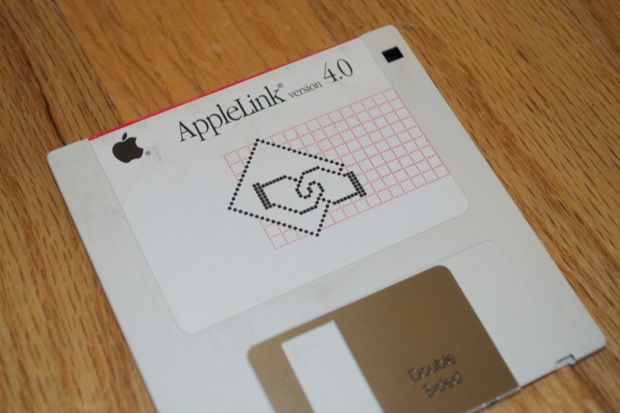
Here’s an oddball one that I’m sure you’ve never heard of. Again, to save me some typing, I’ll refer to Apple’s archived Knowledge Base article:
Mac Access Passport (MAP) is a database that includes descriptive information about more than 100 Macintosh solutions for individuals with disabilities. Each record in MAP contains a product description and developer contact information. MAP includes information on tools for individuals with physical motor impairments, blindness, hearing and speech difficulties, and learning disabilities. The database can be searched by keywords, product name, developer name, disability type, and description text.
Dated 1995, the graphics definitely have an eWorld look and feel.
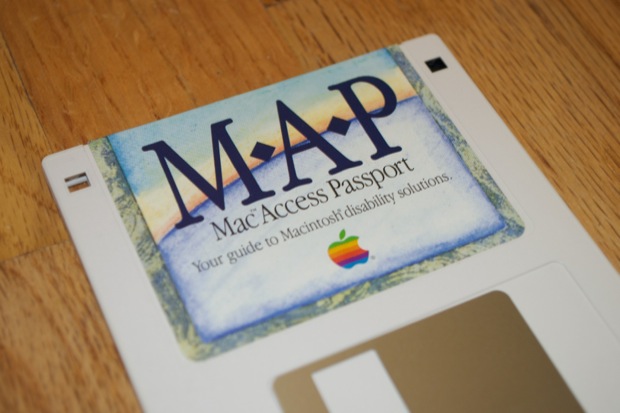
But wait! There’s more!
If all that isn’t enough, there’s also an original 1984 Picasso floppy disk box, along with another lid. (I assumed the bottom half is long gone.) How cool is that? Do you know how hard it is to find these!?
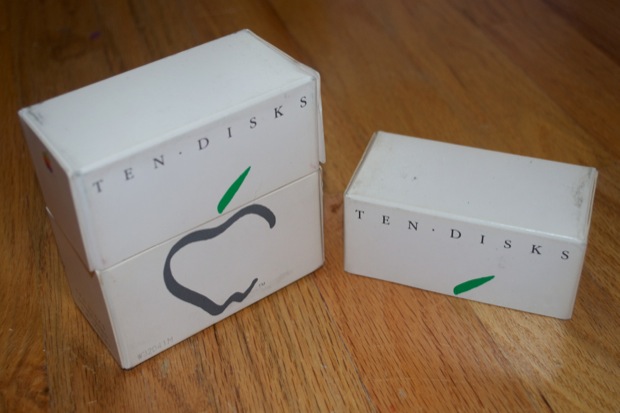
Just as I was about to put the wraps on this post, another box of floppies appeared in the mail. As it turned out, my Dad had another look a day or two later and found yet another 118 vintage 800K floppies along with the missing bottom half of the floppy box. Imagine the luck!
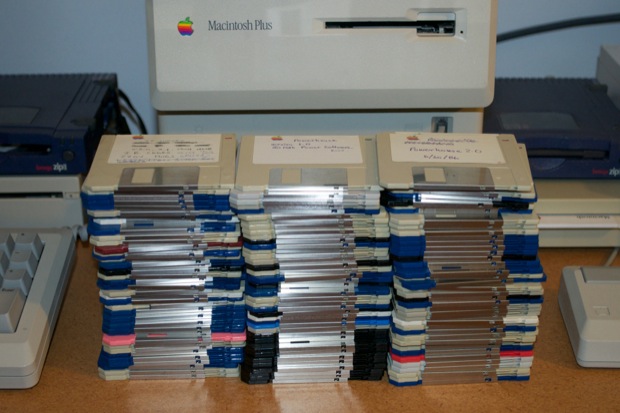
I now have 2 complete Picasso floppy boxes! Awesome!

That brings the total to 318 floppies! I’d hate to just blow them all away. I’m sure there’s some really cool stuff on these disks. Rare apps, fonts, sound bites, drawings, etc. I can’t bring myself to wipe all these disks for use on RescueMyClassicMac without preserving the data first. I regret that I tossed all my old Apple II and Commodore 64 stuff when I moved out of my parents’ house c2001. Who knew 12 years later that I’d be such a collector? I wish I preserved that stuff from my youth.
I want to get all the data off the disks and into a Mini vMac image so my Dad can check out all his old files of yesteryear. The vast majority of the files is old work stuff that my Dad created since the dawn of the Mac, all the way up to the early 90s. A lot of it includes original artwork for product manuals, packaging, flyers, and advertising. I’m sure it’ll be a real treat seeing some of his creations again.
I figured the best way to view the files would be to dump everything into a Mini vMac image. I can easy convert any MacPaint files into .pngs or .jpgs. The more obscure stuff like Ready, Set, Go!, MacDraft, and Illustrator files may be more difficult and will probably have to be viewed within their native environment. If I really wanted to, I could take multiple screen shots of the files in Mini vMac and stitch them together and clean them up in Pixelmator. However, there’s hundreds of RSG files and I think it would take forever. Maybe I’ll cherry pick them and just clean up the gems.
Let’s do this!
I fired up my Mac SE, Mac Plus, and Color Classic and started copying over all the floppies onto Zip disks. I managed to fire off the first batch of 200 in just a few hours. It went by pretty fast with 3 machines cranking them out.
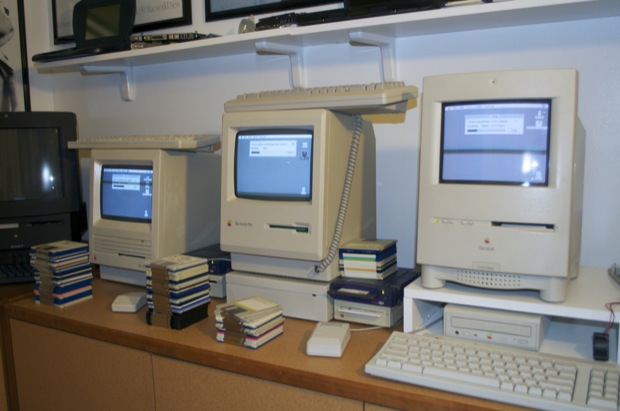
I pushed on and finished the second batch of 118 in no time. All-in-all, I ended up with 105 Megs of data. That doesn’t sound like a lot, even in vintage terms. I thought 318 disks at 800K each would yield a good 250 Megs, but most of the disks weren’t full at all. There were 5 or 6 disks I didn’t bother copying because they were just System disks. There were about 10 or so formatted as 720K PC disks. I opened them up on my Mac Mini, but they were just old DOS utilities. Nothing special. Some of the disks only had single files on them and some of them were blank.
Once all the floppies were copied onto Zip disks, I sneaker-netted them over to my USB Zip drive-equipped Mac Mini. I’m using the Mac Mini because it’s running 10.5, as 10.8 on my Mac Pro doesn’t “do vintage”.
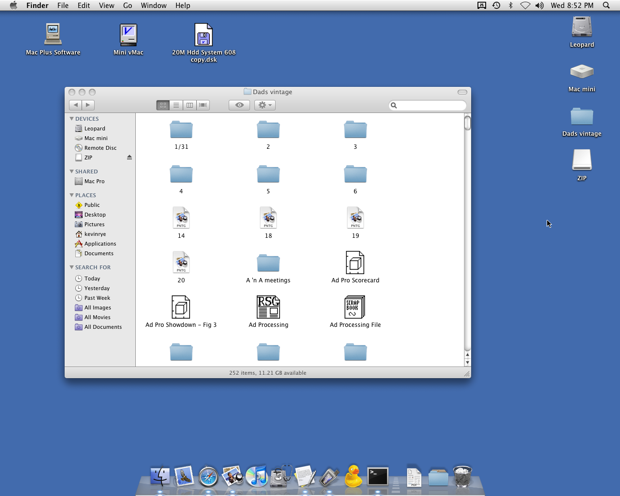
The MacPaint and FullPaint files were easy enough to convert. I just opened them on my Mac using GraphicConverter and re-saved them as .jpgs. Nothing opens MacDraw files, so I actually had to open each one of them and re-save them as PICT files in Mini vMac.
I dropped the image containing the 100+ Megs of files into a Mini vMac image. As you can see from the Finder, there’s 308 files to convert.
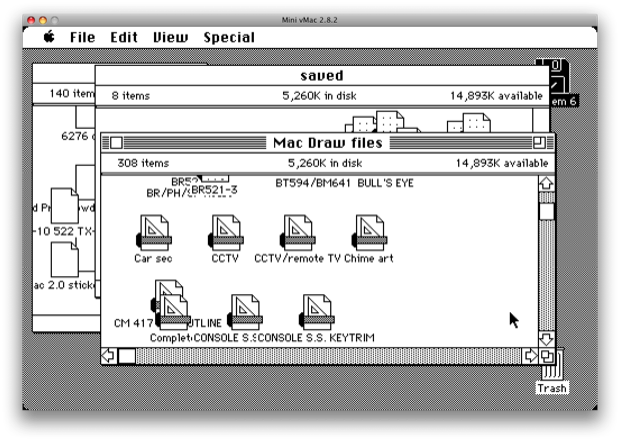
I opened each MacDraw file...
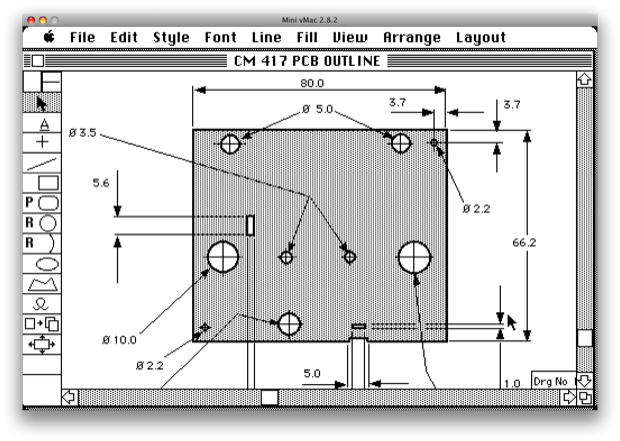
… and re-saved them in PICT format.
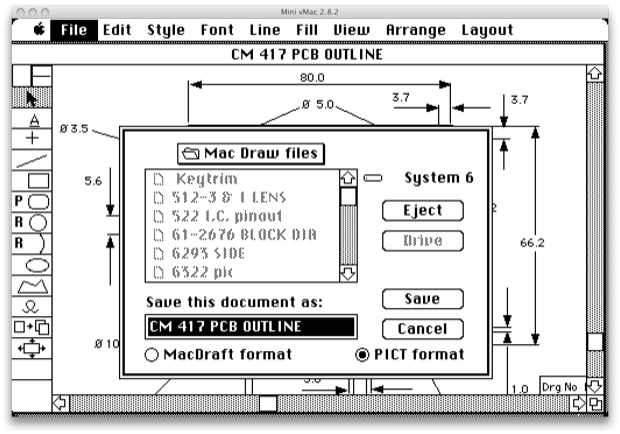
It took a while, but when I was done I could then open the PICT files in GraphicConverter and save them as .jpgs.
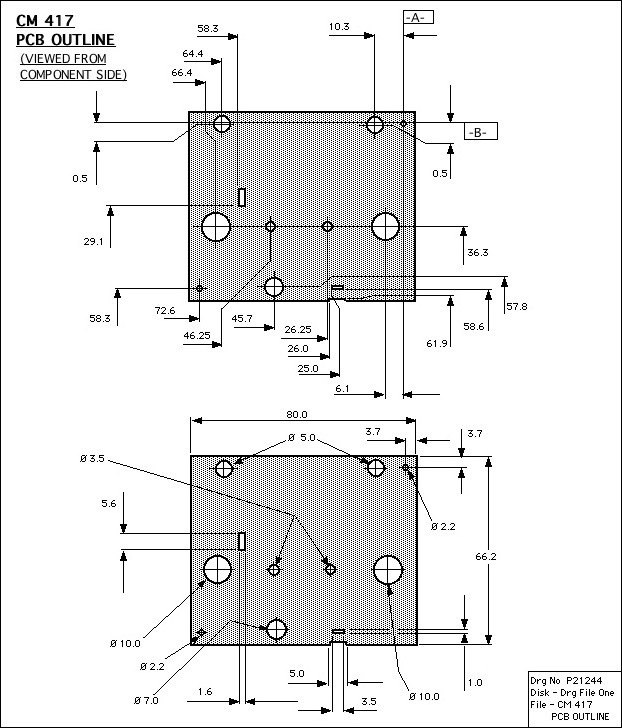
All-in-all, there were 855 images that I converted. I also converted all the MacWrite and WriteNow files. I couldn’t find anything that would open them, but I found out that they’d open with TextEdit if just added a .txt extension to them. I wrote an Automator Action to run through the 641 files and throw “.txt” at the end of each file. For most of them, the formatting went out the window. Each doc had some sprinkled garbage here and there, but overall they’re readable.
There’s still 413 Ready, Set, Go! files that I need to convert. I can’t find anything that opens them. My copies of RSG 2, 3 and 4 don’t seem to have an export or save as option. I’ll have to play around with those some more. In the meantime, I zipped up the 1,500 converted files and threw them on my Dropbox. I sent my Dad a link so he could download them.
You should try your best to preserve your digital past. Whether it’s photos, documents, or videos. Never let them go. 20 years from now, you just might get a kick out of seeing them. I know I did. I found this little gem from 1985. I was 10 years old when I doodled this in MacPaint:
